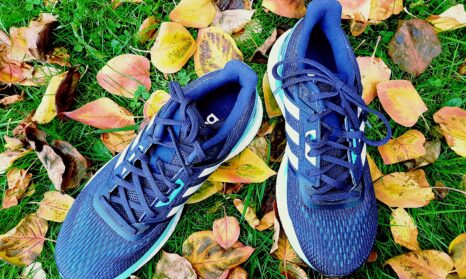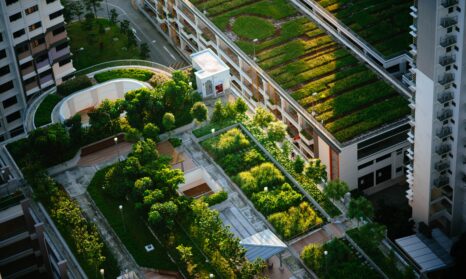Rethinking retail in sustainable placemaking could help achieve One Planet Living
As a sustainability professional I’ve spent most of my career raising awareness of climate change, our overconsumption of resources and the inherent inequality that limits people’s ability to live happy, healthy lives.
But awareness of the climate emergency is now at an all-time high, presenting an opportunity that must not be squandered.
I am passionate about making it easy for people to lead better, more sustainable lives, and to do this we need to make it easy for them to live in zero carbon homes and travel sustainably. But we also need to make it easy for people to consume sustainably. This means changing the kinds of products we purchase and radically changing the way we consume, away from traditional ownership models towards more re-use, sharing and repair.
We must not underestimate the impact that our consumerist society is having on the planet. Taking aside housing which accounts on average for about 22% of a Londoner’s ecological footprint, nutrition and consumables such as clothing, electronics and goods for our homes equate to just over a third.
We will always need to consume, particularly in the categories that address our fundamental human needs such as housing, nutrition, clothing, mobility, healthcare and communication. But it is increasingly important to recognise the vital role that retail will play in ensuring that we do this in the most sustainable way possible.
We need to start to recognise that to be truly sustainable, many key societal needs will have to be met through a service model, providing access rather than ownership, and that access will need to be universal. It will only be through these service models that we will enable consumers to reduce their demand for resources and help them easily reduce their own personal material consumption.
Over the last couple of years my work at Bioregional has increasingly focused on the space where retail and residential meet. Working with both our sustainable business team and our sustainable places team I have often found myself trying to predict future retail trends that will enable us to create an offer that meets the needs of future residents and consumers in the most sustainable way possible.
So I was fascinated to read New London Architecture’s recent report, London’s Retail: exploring what works.
The report describes how London’s retail landscape is evolving fast to meet new demands such as rising rents, online retailing, new technologies and changing consumer demands, and explores how the built environment sector can adapt to ensure a bright future for retail in London.
Reading it, I was encouraged to see that many of the ideas Bioregional champions were included, such as:
- The need for places that meet our day-to-day needs and spaces to meet and interact, to create a sense of community: When it comes to place, the report acknowledges that establishing what a community needs on a day-to-day basis is critical. People need services like doctors, libraries, pharmacies and other day-to-day retail needs. So instead of starting off by considering how much retail a space could take, placemakers should begin by going out to the community and finding out what sort of place local people want. The amount and depth of community engagement should be significantly greater than the current approach, and learning how to use the insights gained from consultation to create the right mix will be vital.
- The need for spaces that are highly flexible and entrepreneurial, and that support innovative, sustainable, locally owned independent businesses: The report nods towards innovative approaches like Pop Brixton, a highly curated space of independent businesses that combines retail, food and beverage and workspace. Pop Brixton provides a totally different approach that focuses on supporting local entrepreneurs to enable them to grow and move on. It acts like an accelerator with low rents and short-term leases (traditionally considered problematic in the retail sector). But it also allows businesses to develop, grow and move on, leaving space for the next newly emerging business to move in.
- Recognising that selling more stuff is not going to drive footfall: The report acknowledges that retail alone will not drive footfall. A well-curated, mixed-use approach is vital to creating the buzz and vibrancy that will determine how well a space thrives. The mix of workspace, food and beverage and leisure alongside retail and residential and a well thought out public realm are also essential for creating spaces that people will want to come to and spend time together.
- The need to respond to the rise in sustainable consumerism: In the section on culture there is a nod to the rise in conscious consumerism, for example noting the rise in veganism. It also references the Retuna shopping mall in Eskilstuna, Sweden, which focuses on creating a market for the re-use of products alongside selling repaired and upcycled products.
It’s great to see these ideas being talked about as the mainstream. But what struck me was how they were viewed as individual trends, rather than the emergence of a completely new and necessary mindset.
At Bioregional we champion One Planet Living, and our ten principles cover everything from health and happiness, culture and community and local equity and economy, right through to zero waste and zero carbon energy.
What makes One Planet Living different is the fact that it focuses on how people live their lives, the homes they live in, how they travel, what food they eat and what products they purchase. It provides a way for us to start to understand how we might begin to tackle the problem of over-consumption head on.
For us, the only approach that will create our One Planet future will be to put sustainability and One Planet Living at the heart of every new development ensuring that not only are the homes sustainable, but that the surrounding mix of services, and retail make it easier and better to live a sustainable life.
As my colleague Anthony said in his recent blog: “From now on, your development is either sustainable, or it’s not. It either fully supports people to lead wholly sustainable lifestyles or it’s part of the problem”.
What that means for developers and retail space owners is that they need to start asking themselves the really difficult question: ‘Does this retail development help customers and residents to lead better, healthier more sustainable lives?’ Because if the answer is no, then it really shouldn’t be part of the offer.







